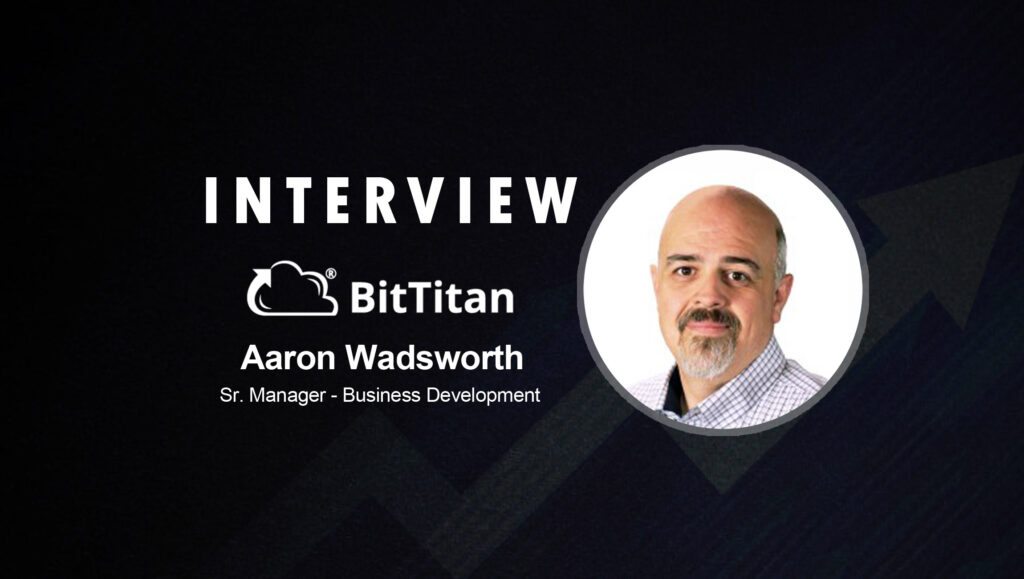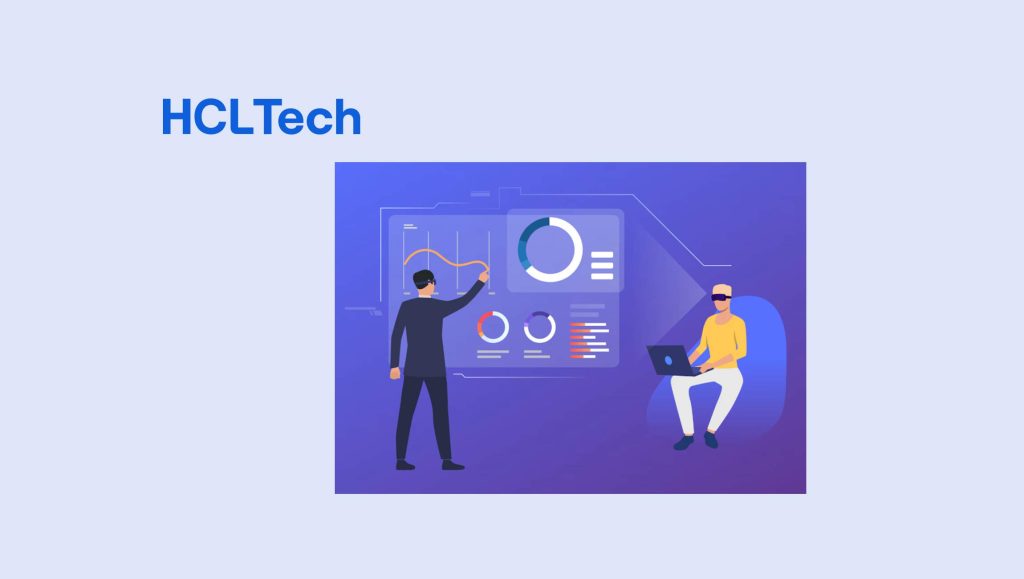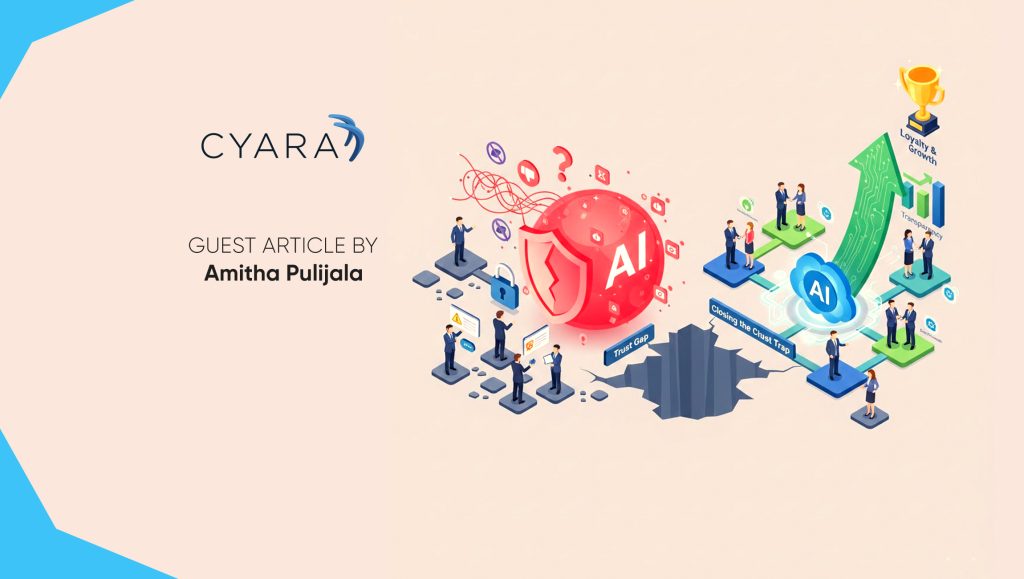Sales must be willing to climb the ladder within a customer organization to engage with the person who makes the actual decisions, and the decision is often not about the product, it’s about the business outcome cautions Aaron Wadsworth of BitTitan as he shares his journey and insights in SaaS based sales in this latest interview.
______
Can you tell us a little about yourself, Aaron? We’d love to know about your biggest operations and field sales learnings/highlights so far and of course, a little about your journey in sales.
I’ve been leading sales organizations or inside sales for almost 15 years. I recently left another organization that I had been with for 12 years to come to BitTitan…
Inside sales is a continuously evolving process. From technology to the buyer’s journey – changes are constant and have to adapt. Coming into a SaaS environment is a big change from enterprise tech sales, where I was focused on enterprise network infrastructure. Understanding the SaaS model and the buyer’s journey is critical for me to successfully lead the sales organizations here at BitTitan.
Read More: SalesTechStar Interview With Chris Calkin, Vice President Of Sales, CircleCI
I got into sales in the late ‘90s. I used to be a network engineer on the technical side, running and supporting networks. As I saw Y2K come and go, I looked at the evolving needs of these organizations and understood that sales at that point was more about an influx of product-feature information and really wasn’t meeting the needs of the buyer. That got me interested in sales, so I took a shot and started learning the sales process. A few years later, I began leading teams. Sales gave me the ability to reach out and connect with people and help them reach their goals. I found that I really enjoyed that connection compared to focusing on the network infrastructure side of things as a network engineer. I found that my background has given me a unique perspective on problem-solving and providing the right solution to my customers.
As someone who leads field sales, we’d love to know a little about some of the top data, insights or tools that you proactively have your team use, to help them target the right prospects/segments of their market.
Having a CRM system is important. At BitTitan, we use Salesforce, which is a great CRM tool. It allows us to manage contacts, opportunities, and all of the data points and research done for our customers, and house it in an organized fashion. As a leader, I’m able to report off of this information in a logical format and funnel metrics around opportunity creation. Our CRM system is set up in a way that enables my sales staff to be productive without administrative overhead.
Time is the one finite thing we have. If you’re spending a lot of time doing administrative tasks, then you’re not selling. One of the things that sales operations can do to ensure their sales teams are being productive is make sure that the CRM system is set up in a way that automates as much as possible and collects as much data as possible to limit the amount of manual or administrative work that’s required.
Beyond integration with programs like Marketo or Outreach, to use marketing automation, you need to deliver timely, focused messages to the right customers at the right times to grab their attention. The hardest thing about sales is getting in touch and engaging with the right person. I might make 100 calls and only talk to three people. So, I need to be able to connect with the right people at the right time.
And finally, we look at social aspect automation. BitTitan is getting ready to deploy a chat-based solution that will allow customer self-service while also enabling us to engage with those customers at the same time if they need to communicate with us right away. Another tool we’re employing is video. In light of COVID-19 and everyone moving to video chat, video is a better way to connect and engage with our customers directly. Prior to COVID-19, my team deployed video cameras, leveraged Teams and scheduled live meetings to connect with our customers. This face-to-face communication allows us to better understand the visual cues that are often missed over phone or email. That visual representation and visual connection makes it much more authentic and personal.
Read More: A Shifting Creative Economy Connects And Thrives
What, according to you, are some of the must-have sales technologies that everyone in technology sales including field sales should keep as part of their tech stack?
Many of the technologies I’ve previously mentioned, including Salesforce, Marketo and Outreach, and then Drift, which is a great solution. It offers video capabilities for leaving video messages with customers, which is part of the Drift stack offering that BitTitan is looking to deploy. We’re trying to evolve by leveraging new tools, which presents a great opportunity to enhance our sales tools arsenal to continually develop better customer relationships.

It’s important to have a sales operations team that can make the technologies all sing together. It’s like an orchestra: You can have a bunch of different instruments, but if you don’t have someone conducting, it won’t sound like music. All of these technologies work together because a buyer’s journey is not a singular path. It ends up winding back to the right time where they’re ready to have a conversation with you and you can help the buyer with whatever business outcome they’re trying to achieve.
Not only is retaining a tech sales team a big challenge, constant upskilling and professional development is, too. How do you approach this as a sales leader?
As a sales leader, when I joined BitTitan, one of the first conversations I had with each of my direct reports was understanding where their mindset was professionally: what they like and dislike about what they do now, what their career ambitions or goals are, and do they want to level up within a sales organization or professionally develop in other technical areas.
From there, the goal is to build out plans to get these employees exposure to those roles they want to pursue. This can entail adding additional job functionality beyond their current scope that allows them to work on projects, or within another team to gain experience, or maybe just get them out in the field if they’re currently working inside sales.
I think a lot of us envision what we’d like our next job to be, but when we get the opportunity to experience it, it might not turn out to be the right opportunity for us. By providing these opportunities in bits and chunks, it allows a better understanding of where these employees want to go and how I can help them move forward on that path. Sales leaders can build a plan around how to expose employees to these career paths to ensure it’s where they want to continue developing their skill set. If someone wants to stay in sales, we’ll figure out a way to level up and get them more exposure and more responsibilities, whether it’s expanding their regional reach or taking on coaching to move into a leadership role.
Enterprise sales has its own set of must-haves and demands. What are some of the top strategies or fundamentals you’d advise teams use when they are facing challenges when selling in a Fortune 500/Fortune 2000 environment?
The Fortune environment presents its own challenges. It’s critical to understand the layers – specifically who the decision-maker is and not letting yourself get stuck at a lower level. Sales must be willing to climb the ladder within a customer organization to engage with the person who makes the actual decisions, and the decision is often not about the product, it’s about the business outcome. If you don’t understand the business outcome they’re trying to achieve and can’t connect how your product will help them get there, that sale is never going to happen.
One of the biggest things I see in those organizations is it’s very difficult to climb to the decision tier. So how do you build that relationship with the contact that you’re working with today to be promoted to the next level? If the lower-level engineer or network director or whoever you’re working with doesn’t trust you and won’t allow that business conversation at the decision-maker level, your sale is gone before you even had it. It’s important to build trust and explore ways to level up within the organization.
How, according to you, will the typical role of tomorrow’s B2B/tech-sales person evolve, given the dynamics and innovations in salestech? What should today’s sales person do to prepare for a future role as a senior level sales executive in tech?
Technology is always changing, so if you’re not adaptable, then you’ll never keep up with the change of environment. What works today may not work 12 months from now – always adapting to what the market needs and adapting to the technology is important. The speed at which new innovations have come out has been astounding. Whether it’s Drift or whether it’s Microsoft Teams, it’s amazing how quickly technology has evolved over the last 10 years, or even the last two years. Stay on top of how things change and prepare to understand and leverage the tools you’re given.
If you think there’s a gap, bring that back to your organization. It’s just as important to bring ideas and concepts back to leadership as it is for leadership to make decisions and bring tools and resources back to you. The leadership team may not be aware if a gap or issue exists. Adapting, evolving and always being aware of what’s happening in your market and your customer’s market is critical.
Read More: Is Account-Based Marketing The Best Thing For Sales?
What would you say or do in your capacity to turn sales and technology sales (or marketing) into the most exciting job of the decade?
I think it already is. We solve problems that the customers often don’t even know exist yet. If we engage with the right person and ask the right questions, we can show them an opportunity within their business that they didn’t even know existed. That could be an opportunity for them to branch into a new market or operate completely differently.
We’re seeing that with COVID-19. People who previously weren’t thinking about remote operations and enabling staff to work remotely are now quickly making the evolution change and realizing there’s a large percentage of their company that can work remotely and do it successfully.
Sales is never stagnant. It’s always changing and is one of the most exciting places to be, especially in technology sales. Staying on top of those changes not only gives us an edge, but keeps our job exciting. Don’t let your knowledge get stagnant. If the company you’re working for is stagnant, then maybe there’s an opportunity elsewhere.
Tag (mention/write about) the one person in the industry whose answers to these questions you would love to read!
Someone that was a mentor for me in my early years of sales –– is Rob Haine. He and I were both part of Fluke Networks, and when NetScout acquired Fluke Networks, he moved over to VIAVI. He’s taken on more roles and responsibilities over the years and is currently the Vice President of Worldwide Sales for their Network, Performance Management and Cloud division. It would be very interesting to see what his take is on these same questions based on his breadth of experience and leadership.
What’s your favorite sales/salestech quote and sales leadership books you’d suggest everyone in Sales reads?
The most recent book I finished that I really liked was “Never Split the Difference,” by Christopher Voss and Tahl Raz. The reason I liked it so much is we often focus on sales methodologies in a sales organization. But all too often we miss the critical art of negotiation. A lot of the best salespeople have developed negotiation capabilities just naturally over time and that’s why they’re successful. Other sales leaders and account managers may have followed a lot of the terminology and processes around sales methodologies but have never dived into negotiation. More often than not, when a salesperson reaches the end point of closing a sale, they’re not equipped to have those conversations and really negotiating the deal.
Our job as salespeople is making the customer want to buy the product. We don’t think about negotiation at the end. I think that’s a big piece that’s missing in the overall sales mindset that could definitely improve.
As for a sales quote, one of my favorites, especially in today’s current environment, is from Brian Tracy:
“Approach each customer with the idea of helping him or her solve a problem or achieve a goal, not of selling a product or service.”
Tell us about some of the top sales/salestech/fintech/other events that you’ll be participating in (virtually, given the current global pandemic) as a speaker or guest in 2020.
I’ll be attending the Outreach Summit that will take place digitally, called Unleash 20 – Outreach. I’m looking forward to learning more about the Outreach system. I’ll also be attending Google Next, Microsoft Inspire and Microsoft Ignite, which have all been moved to digital environments. I plan on being involved as a guest and taking in data in this new digital events environment – events are still new to me as part of the migration business.
Listen in -> to the latest episodes of The SalesStar Podcast!
We’d love to know a little about your future plans.
A lot of my future planning has to do with bringing inside sales and sales in general at BitTitan to the next level. We have a new business development manager – me – and then we have a new Americas sales director. Between the two of us, we’re focused on evolving the organization and bringing it to the next level, which requires instilling a lot of processes and development of the business.
As companies start growing, what once worked as a startup no longer becomes sustainable. We need to start looking at what will be sustainable long-term from a sales process and organization methodology.
Companies often start to focus on customer success organizations, overall profitability and how the profitability of sales contributes to the business. There’s a lot of those dynamic shifts that start occurring as a business goes from a startup mentality to more of an enterprise business of its own. We’re working through that and bringing in new technologies to enable our sales teams to have better conversations and connect with our customers more authentically.
Read More: The Many Faces Of Ad Fraud: How To Fight Back
A few tips, if possible, for sales and marketing teams (businesses) trying to navigate through the current pandemic crisis.
Communication is key – communication with your customers, co-workers and marketing organization – and it has to be two-way. BitTitan is driving great communication and productivity between different departments and making sure we’re all working together even though we may be working apart. We’re not face-to-face, so it would be easy for us to go down different roads and not be in sync. Communication is absolutely key.
I think if you bring that communication into every part of the business and make sure that you have open, meaningful two-way conversations going between every department that works together, you’ll be in a better place. We all need to know what’s happening for the whole state of the business.
Often, if something falls apart on one side there are resources available somewhere to pick up the slack in order to make it work. Businesses can quickly unravel if they don’t have solid communication.

BitTitan® empowers IT service professionals to successfully deploy and manage cloud technologies through automation. MigrationWiz® is the industry-leading SaaS solution for mailbox, document, public-folder and Microsoft Teams migrations between a wide range of Sources and Destinations. Voleer is a solution that centralizes and automates IT tasks, helping empower IT service professionals to streamline daily operations and eliminate redundancies. Since 2009, BitTitan has moved over 19 million users to the cloud for 43,000 customers in 187 countries and supports leading cloud ecosystems including Microsoft, Amazon, Google and Dropbox. The global company has offices in Seattle and Singapore.
Aaron’s expertise lies in developing and leading professional regional and international field and inside sales teams and supporting company operations.






















